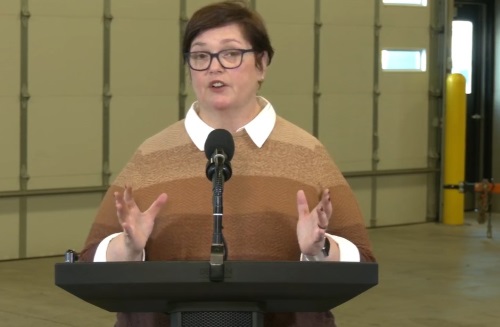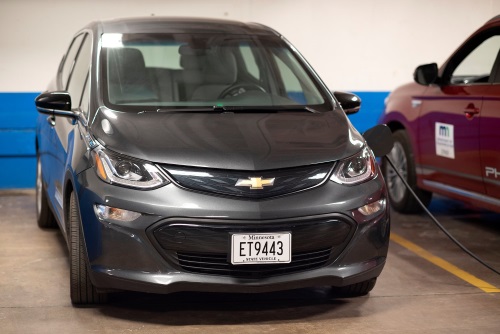The Minnesota Department of Transportation is adopting a slate of recommendations proposed by the Sustainable Transportation Advisory Council or STAC in order to create “measurable strategies” to help the state transition to a low-carbon transportation system.
[Photo courtesy of the Minnesota Department of transportation.]
Those recommendations include:
- Developing a clean fuels policy.
- Supporting electric vehicle rebates.
- Increasing investment in charging infrastructure.
- Setting a preliminary 20 percent goal of reducing vehicle miles traveled or VMT statewide by 2050.
- Prioritizing transit and high-occupancy vehicles on agency-owned right of way.
- Continuing to prioritize other solutions before considering highway expansion
“We are deeply grateful to the members of the STAC for their thorough recommendations as we work collaboratively to reduce carbon pollution from the transportation sector,” noted Margaret Anderson Kelliher, Minnesota DOT’s commissioner, in a statement.

“Our climate is changing, and we all share in the responsibility of working harder to achieve Minnesota’s Next Generation Energy Act emission reduction goals. The recommendations of the STAC will be critical to our success,” she added.
The Minnesota DOT created STAC following its 2019 report Pathways to Decarbonizing Transportation, which identified several actions, recommendations, and opportunities to reduce greenhouse gas emissions from surface transportation.
“The MnDOT is leading with action by convening and listening to a diverse group of community leaders on the STAC,” noted Chris Clark, president of Xcel Energy and STAC’s co-chair.
“But make no mistake, the MnDOT can’t do this work alone,” he explained, “Decreasing greenhouse gas emissions will require significant public-private and interagency partnerships as well as coordination with municipal and county agencies. Our STAC recommendations are one important step, and we appreciate that the MnDOT is moving forward with many of them.”
Concurrently, the Accessibility Observatory at the University of Minnesota is moving into the second phase of a multi-year national pooled-fund study to measure access to destinations, such as jobs, education, and health care as a way to guide transportation investments and land-use planning.
“Measuring access to destinations gives us the clearest possible view of how well our transportation systems connect travelers with important destinations,” explained Andrew Owen, the Observatory’s director, in a statement.
“It can also reveal how transportation and land use planning work together to set the stage for future growth and sustainability,” he added. “Comprehensive accessibility metrics can help planners make wise, cost-effective transportation system investments that will best serve public needs as they evolve through an increasingly uncertain future.”

